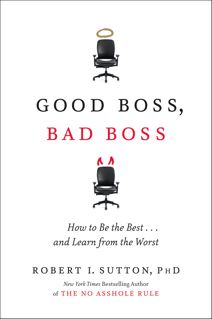Positive Leadership Limited is a strategic leadership and corporate finance advisory firm. We use our considerable experience to provide unique perspectives and innovative solutions which help corporate leaders unlock maximum value from complex business challenges. There is no dress rehearsal for delivering answers to critical business challenges. When you are under intense pressure to succeed, we help deliver the vitally important marginal gains which let your business excel and win.
Tuesday, November 30, 2010
Positive Leadership and Elite Sport
Creating Meaningful Corporate Values
Creating Meaningful Corporate Values
Monday, November 29, 2010
Servant Leadership In the Workplace
Servant Leadership In the Workplace

Sunday, November 28, 2010
Asking the Right Questions
Asking the Right Questions

Saturday, November 27, 2010
How Companies Can Develop Critical Thinkers and Creative Leaders
How Companies Can Develop Critical Thinkers and Creative Leaders

Friday, November 26, 2010
Persistence Wins!
Persistence Wins!
Thursday, November 25, 2010
Happy Thanksgiving!
Please remember at this special time that everyone we interact with is a chance to create a remarkable experience.
Happy Thanksgiving!

Wednesday, November 24, 2010
Aligning Behaviour Around Values
Aligning Behaviour Around Values
Tuesday, November 23, 2010
What is an Authentic Organisation?
- The organisation knows ‘who it is” and what characteristics make it distinctive.
- People in the organisation understand why these distinctive features are meaningful.
- The organisation knows what it is striving to create in this world. It has a sense of purpose that goes beyond the products and services it offers.
- The organisation knows how its distinctiveness fuels and adds unique insight to the pursuit of organisation’s purpose.
- The organisation has a few signature actions, behaviours and products that bring to life the organisation’s meaning, and move it towards its purpose.
- Both the purpose and the distinctive, meaningful characteristics of the organisation resonate with stakeholders and draw members, customers, and constituencies to the organisation.
- The organisation actively supports its members, customers, and constituencies in their own authenticity as they work with the organisation to achieve its purpose.
What is an Authentic Organisation?

Monday, November 22, 2010
Positive Leadership
Positive Leadership
Sunday, November 21, 2010
It Is About You
It Is About You
Saturday, November 20, 2010
Use Failure to Grow Your Business
Use Failure to Grow Your Business

Friday, November 19, 2010
Dominating Leaders Make Worse Decisions
The study suggests that while it is important for leaders to exude authority and competence, the evidence suggests that appearing too powerful will inhibit their team members from expressing an opinion. This harms the ability to make good decisions by excluding arguments and evidence from the decision-making process.
Dominating Leaders Make Worse Decisions
Thursday, November 18, 2010
Doing What We Already Know
Doing What We Already Know
Wednesday, November 17, 2010
Positive Leadership Limited - The Power of Sound Advice™
For more information, please contact: graham.watson@positiveleadership.co.uk
Positive Leadership Limited - The Power of Sound Advice™

Building Power and Leadership
Building Power and Leadership
Tuesday, November 16, 2010
Enduring Truths About Leadership
Enduring Truths About Leadership
Monday, November 15, 2010
HP's New Leadership: A Vision for the Future?
HP's New Leadership: A Vision for the Future?
Be a Better Leader, Have a Richer Life
Be a Better Leader, Have a Richer Life

Sunday, November 14, 2010
Military Skill Sets Lead to Organisational Success
Military Skill Sets Lead to Organisational Success
Saturday, November 13, 2010
Getting the Whole Leadership Picture
- The quantity of leaders needed, as indicated by current and projected formal leadership positions depicted on an organisation chart (number, level, location, function, business unit, reporting relationships, etc.).
- The qualities desired in selection (demographics, diversity, background, experience level).
- The skills and behaviour that are needed to implement the business strategy and create the desired culture (skills, competencies, knowledge base).
- The collective leadership capabilities of leaders acting together in groups and across boundaries to implement strategies, solve problems, respond to threats, adapt to change, support innovation, etc.
- The desired leadership culture, including the leadership practices in use, such as collaboration across boundaries, engagement of employees, accepting responsibility for outcomes, creating opportunities for others to lead, developing other leaders, learning how to learn, etc.
For more information, please contact: graham.watson@positiveleadership.co.uk
Getting the Whole Leadership Picture

Friday, November 12, 2010
Why Performance Reviews Should Be Abolished
Why Performance Reviews Should Be Abolished

Thursday, November 11, 2010
Leadership Lessons from a Lifetime of Service
Leadership Lessons from a Lifetime of Service

Tuesday, November 09, 2010
Fear
Fear

Types of Failure to Avoid
Types of Failure to Avoid
Obstacles Can Be Overcome
Obstacles Can Be Overcome

Monday, November 08, 2010
Be Prepared for a Turbulent Business World
Be Prepared for a Turbulent Business World
Sunday, November 07, 2010
Going For More At Work
Going For More At Work

Saturday, November 06, 2010
Leading from the Front
Leading from the Front
Friday, November 05, 2010
Great Leaders = Great Teams: Ten Ways to Expand Your Leadership
Great Leaders = Great Teams: Ten Ways to Expand Your Leadership
Thursday, November 04, 2010
Positive Leadership's Gavin Hastings and Tiger Woods
Positive Leadership's Gavin Hastings and Tiger Woods

Selling Your Ideas
Selling Your Ideas
Wednesday, November 03, 2010
Amir Khan
Amir Khan

Tuesday, November 02, 2010
The Importance of Core Values
Leadership Insights - Values and Small Business from Matt Martin on Vimeo.
The Importance of Core Values
Educating for Ethics
Educating for Ethics

Monday, November 01, 2010
A Fighter Pilot's Guide to Effective Communication
- Brief the mission in order to establish objectives, delegate responsibilities, analyse threats, and review contingency plans.
- Establish a communication ("comm") game plan which confirms when and where to change frequencies.
- Ensure positive two-way communication is established during critical elements of a mission.
- Brief a back-up plan in case communication fails (known as "radio-out" procedures).
- Debrief every mission to review lessons learned and reinforce training.
- Have a mass briefing at least once a month. Gather your troops and communicate the latest trends, organisational goals, sales updates, and product upgrades etc. Your wingmen need to hear important news — whether good or bad — from you first. This is also a great time to publicly recognize your top performers.
- Conduct feedback sessions on a regular basis. Sit down with your wingmen and let them know how they are doing. Are they meeting your expectations? Ask them about their goals and challenges and how you can help. Then solicit feedback on you as a leader. What would they like to see from you? Avoid letting your ego get in the way of their feedback.
- Walk the flight line. Get your hands dirty with your wingmen. Spend time with them on the job and observe how they do business. Ask questions. Show them your appreciation by connecting with them as people first and employees second.
- De-brief your missions. Remove your 'rank' and conduct a nameless, blameless, and rank-less de-brief after every critical mission. Find out if objectives were met, and analyse why they weren't. Search for trends and communicate these to the rest of your organization.
A Fighter Pilot's Guide to Effective Communication




%20color%20logo%20101707.jpg)
































